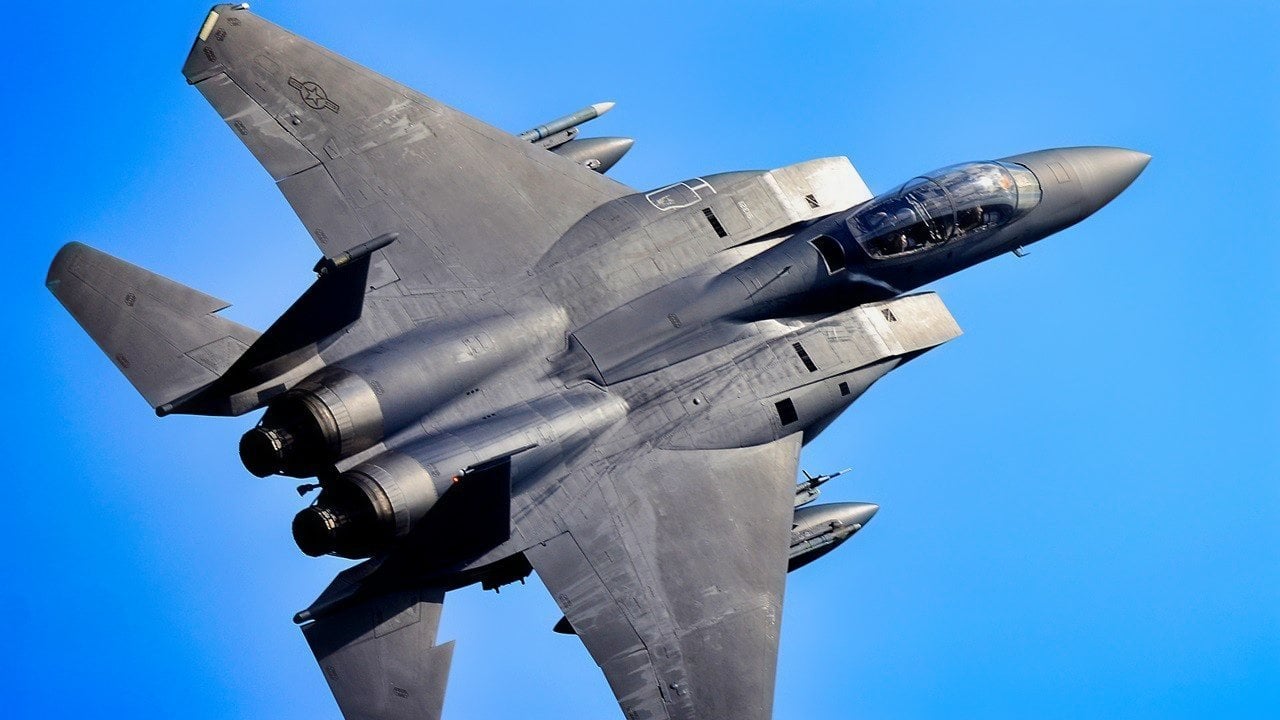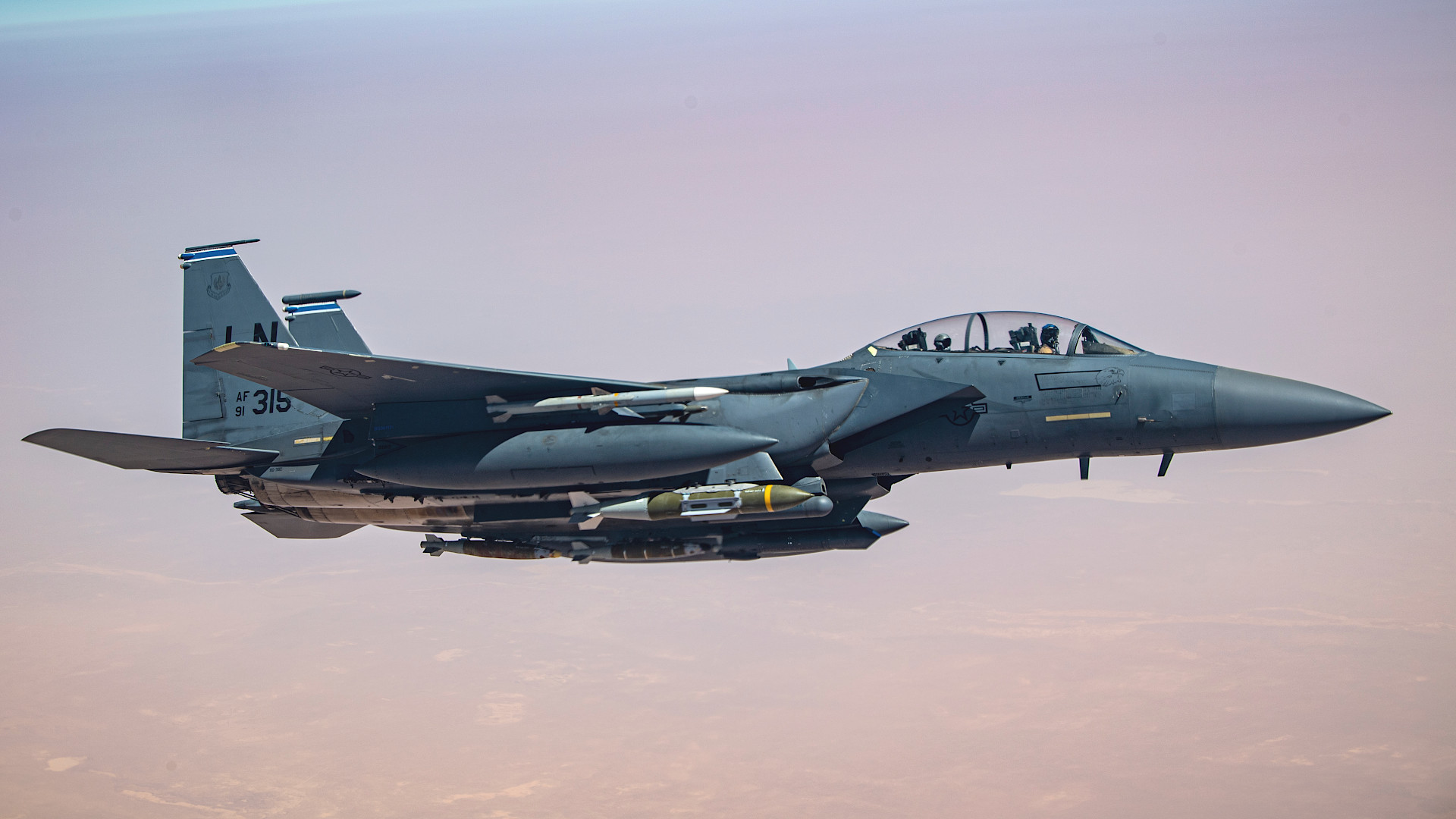The F-15E Strike Eagle is no ordinary fighter jet. It’s a twin-engine, all-weather, multirole strike aircraft designed to carry out a wide range of missions with unparalleled precision and power. Built by McDonnell Douglas (now Boeing), the F-15E has been a cornerstone of U.S. air superiority for decades. From its first flight in the 1980s to its continued service today, this aircraft is a symbol of cutting-edge military technology, delivering unmatched performance in both air-to-air and air-to-ground combat.

The Birth of the F-15E: A Game Changer
The F-15E Strike Eagle was born out of a need for a versatile fighter that could excel in both air superiority and ground attack roles. It evolved from the original F-15 Eagle, a pure air superiority fighter, but was modified extensively to carry heavier payloads and operate effectively in various combat scenarios. The Strike Eagle’s unique design allows it to carry both bombs and missiles, making it a true multirole fighter.
With advanced avionics, radar, and weapons systems, the F-15E is capable of performing long-range, high-speed interdiction missions without relying on escort or electronic warfare aircraft. Its dual-role capability means it can engage enemy fighters while also delivering precision strikes on ground targets, a combination that few aircraft can match.

Unmatched Firepower
One of the F-15E’s most impressive features is its ability to carry a vast array of weapons. Equipped with a 20mm M61 Vulcan cannon and able to carry a payload of up to 23,000 pounds of munitions, the Strike Eagle is armed to the teeth. It can be loaded with a variety of bombs and missiles, including precision-guided munitions such as the JDAM (Joint Direct Attack Munition), air-to-air AIM-120 AMRAAM missiles, and laser-guided bombs.
This firepower enables the F-15E to strike a wide range of targets, from heavily fortified enemy positions to high-flying enemy aircraft. The aircraft’s advanced targeting systems, including the Sniper Advanced Targeting Pod, ensure pinpoint accuracy, even in difficult weather conditions or during night operations.
Advanced Avionics and Capabilities
The F-15E is more than just a fighter jet with brute force—it’s a technological marvel. Its advanced radar system, the AN/APG-82 Active Electronically Scanned Array (AESA), provides superior situational awareness and tracking capabilities. This radar allows the Strike Eagle to detect, track, and engage multiple targets simultaneously, making it a formidable opponent in air-to-air combat.
Additionally, the F-15E’s electronic warfare capabilities help it evade enemy defenses and operate in contested environments. The aircraft is equipped with advanced jamming and countermeasures systems, which protect it from radar-guided missiles and other threats.
Its ability to refuel in midair also makes the Strike Eagle a strategic asset in extended missions. This increases its range, allowing it to strike deep into enemy territory without needing to land and refuel, giving it a critical edge in combat scenarios that require sustained operations.
Proven in Combat
The F-15E has seen extensive combat, proving itself in multiple theaters of war. From Operation Desert Storm to the War on Terror, the Strike Eagle has been a key asset in U.S. military operations around the globe. Its combination of speed, firepower, and precision has made it indispensable in both air superiority missions and ground strikes.
In Operation Desert Storm, the F-15E played a crucial role in destroying enemy air defenses and infrastructure, delivering precision strikes with devastating effectiveness. Its ability to operate in harsh environments and perform a variety of missions made it a go-to aircraft for military commanders.
More recently, the F-15E has been deployed in the fight against ISIS, where it has carried out precision airstrikes on enemy positions, infrastructure, and command centers, once again proving its worth as a multirole fighter.
The Future of the F-15E
Though the F-15E has been in service for over three decades, its future remains bright. Ongoing upgrades and modernization efforts continue to enhance the Strike Eagle’s capabilities. The integration of new radar systems, improved avionics, and advanced weaponry ensures that the F-15E will remain a dominant force in the skies for years to come.
As newer aircraft like the F-35 join the U.S. Air Force’s fleet, the F-15E will continue to serve as a complement to these platforms, offering unmatched firepower and endurance for missions that require versatility and long-range capabilities.
Conclusion
The F-15E Strike Eagle is a true icon of air combat. Its combination of speed, power, and precision makes it one of the most formidable aircraft in the world. Whether taking down enemy fighters or delivering devastating strikes on ground targets, the Strike Eagle has consistently proven its worth in combat. As it continues to evolve with modern technology, the F-15E will remain a critical asset in ensuring U.S. air superiority for the foreseeable future.





